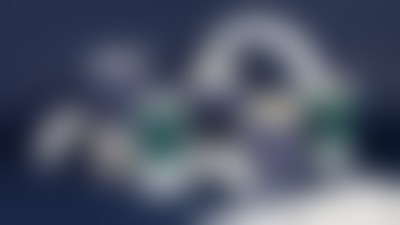Exclusive interview with James Sommerville

Former VP Global Design The Coca-Cola, leading global design activations for iconic brands, across 100+ markets. Founder of KnownUnknown a distributed talent platform of the world’s best designers.
Co-founder of ATTIK, one of the most respected UK design firms across 25 years. Exit to Dentsu USA.
Keynote speaker on Design and Branding.
What is design thinking for you?
I remember reading the IDEO book in the early 2000s and felt the process being shared is what I would do intuitively and probably most creatively. Then I thought it was written for non creatives, maybe in large corporations. This is where I noticed design thinking became the buzz-word and was constructed like a 3 day cross-discipline workshop, lots of people and lots more PostIt notes. All together in a room with teams and then afterwards… people go back to their jobs and not much happens. So I have seen many different versions of the design thinking process. I prefer my own process vs from a book. Excited to just keep rethinking something.
You did graffiti when you were young. What are your top 3 favorite murals?
Speto artwork in Brazil. His work is a form of communication constantly telling stories in a changing urban landscape. I was lucky enough to meet and appoint him for the Coca-Cola 2014 World Cup and he's a good friend today. Love his work.
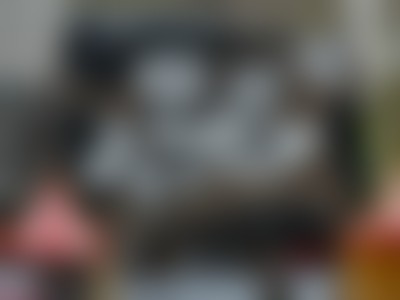


Fritz Steller, very fixed ceramic panels by, entitled Articulation in Movement in my hometown in Huddersfield UK. A market hall decorated on the outside with these massive square, ceramic artworks, a timeless inspiration from when I was a kid and still looks great today.
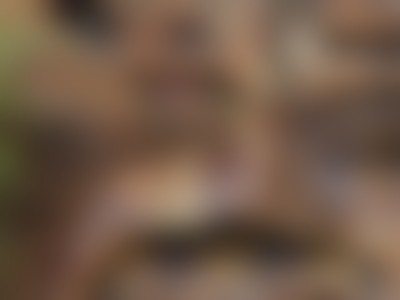

How did you decide to become an entrepreneur at the age of 19? Tell us the story of Attik. How did the Prince (now King Charles III) help you?
The simple answer is I needed some money and there were no jobs in the Uk back in 1986. Then I was a young designer finishing art college in the north of England. With my friend Simon Needham, we had spent 4 years studying graphic design and typography, while also working on weekends as pavement artists, chalking across towns and cities in the UK for some spare money. After finishing art school there was very high unemployment, so we had an idea to start a design agency, but no real experience, or means to bring it to life, no cash – and no fingerprints after all that street chalking!


We naively approached all the UK high street banks for financial business loans, but we were turned down because we didn’t look like “businessmen”. Not long after, my Dad told me about a news article he read regarding Prince Charles having started a youth charity to help young entrepreneurs. We figured we had nothing to lose and we applied, and they were willing to consider our business idea.
We were eventually awarded a £2,000 grant. It felt like winning the lottery. With the money from the grant, we invested in an early-generation Apple Macintosh, a tool that of course became the foundation of our graphic design studio. ATTIK was founded in my grandma’s attic bedroom in Huddersfield. We spelt with a “K” because we had to draw the first logo with a pen/ruler and we could not draw “C” very well. ATTIK eventually expanded across the world and had over 1,500 employees in total. In 2007, it was acquired by Dentsu in 2007.
After a few years at Dentsu, I then joined The Coca-Cola Company as Vice President of Global Design in ATL, USA. Not only did The Prince’s Trust give us the initial financial support – it gave us the belief in ourselves as teenagers and confidence to dream, something that I've carried throughout my entire career, even at Coke. The Trust £2,000 actually gave me my future.

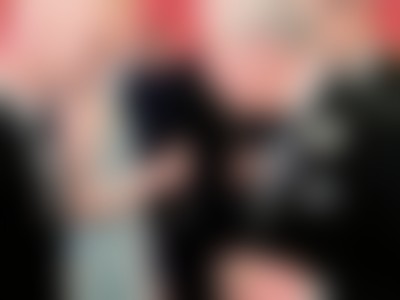

The UK is a centre for graphic design with many famous and renowned design universities and talented agencies. What made you different from other studios?
Simon and I felt most of the UK agencies were all much better than us, especially because they were in London. But they also felt very similar in many ways. Similar in studio structure, size of agency, type of clients and overall a very London/British mindset. I feel our northern personality made us think about how we could be different vs inferior to them.
We were also a bit cheeky to think we could be better than London agencies, but we thought “f*ck it” we have nothing to lose. We experimented more and more with print technology and leveraged the ever expanding software at the time in the mid 1990s. We produced books to “sell our agency” not sell books. In many ways our Noise books were our Instagram of the day.

We also travelled to different places where we would feel unique and not just ‘northerners’ so we set off, to the US, to Asia, to AUS and LATAM. There were not many Brits in those places in the 1990s, so we stood out a bit and people became interested and involved in our design approach and culture.
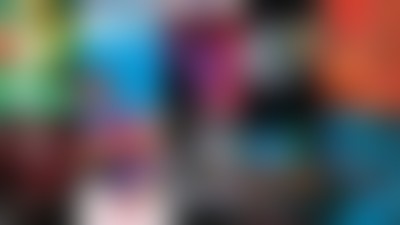
How was the creative process structured in your agency? How long did it take to develop a corporate identity concept and how much time was allocated to putting together a ready-made presentation for a meeting with the client?
This could vary a lot. I suppose 3 months would be a short timeline and 6+ months a longer assignment. We were a project-by-project agency and that’s a massive risk looking back. We had no retained clients for a long time and when that is the business model, you are only probably ever 3 months from bankruptcy. Thankfully we were scrappy and good at surviving. I think we survived 4 or 5 recessions and it was in those periods we learned the most and refined our process and practices.
Why, after almost 25 years of successful work at Attik, did you decide to sell the agency to Dentsu?
We needed some “air cover”. We felt being part of a network would help us survive easily. It was actually the opposite, it was the beginning of the end. Dentsu officially closed ATTIK officially in 2016, and they paid quite a lot of $$$$ for our agency.
The lesson here is that selling your pride-and-joy isn’t necessarily the answer. Yes, we wanted a pay-day, but when I look back I don’t think Dentsu knew what to do with ATTIK. We felt like a shiny object and over time, that shine became dull. The happy ending to this story is that I bought ATTIK’s name and brand back in 2022 for $1. Maybe one day Simon and I can relaunch ATTIK 2.0 or pass to our kids, maybe a school, or shared collaboration space. Ideas welcome!
How would you describe your 5 years of experience at Coca-Cola as VP of Design in three words?
Big, Slow, Educational.

Weren't you tired of Coca-Cola always being red and you could never retreat from it?
No. Why? I feel many designers get bored of their work or clients, way too easily. Agencies would pitch me at Coke ideas but I knew they just wanted a headline at Cannes or something. The VP Design role is not to change the distinctive assets of the brand for the sake of it. The role is to grow the brand, and personally I saw my responsibility was to prepare the ground for the next VP, so he/she can succeed and so on, and on. Brands would give everything they have to have the red presence of Coke. I did change the script once. Not for the sake of it but for the love of it.

How did you work on the design system for all Coca-Cola sub-brands?
Yes, I rebranded many, or most of their ‘billion dollar brands’ and enjoyed these briefs too. In many ways there’s a bit more freedom outside of the Coke brand.
I remember rebranding Fanta in 2016. We tested x5 routes with young consumers and the results came in. In the meeting my preferred design route came in last, LOL. But the CMO at the time (Marcos de Quinto) said in the meeting “…forget research, I want to know what design route James thinks is right for the Fanta brand? So I said my preferred route that scored the worst with consumers because I felt it was the best for the future consumer and he said OK, then that’s what we launch with.” The lesson here is to see testing results as something that informs but not decides. Also amazing leaders will always support good design.

What is your favorite craft for Coca-Cola?
The decades and decades of amazing storytelling and art direction from the 1950s through to the 1980s. I used these vintage ads as my inspiration to art direct work to engage a new generation. Same story, just 50 year later.
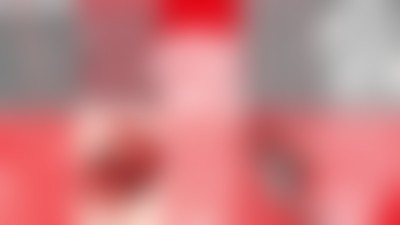
How and where do you find resources/ideas for creativity?
Today, maybe something simple like riding in an Uber, and not looking at my iPhone but looking at what’s outside, maybe the street signs, the billboards, architecture, logos on vans, graffiti on walls or shop front graphics. 20 mins in an Uber looking at the world for visual storytelling is like reading a book to me.

Are you sad that the Queen is no more? Your personal memories about Her.
She was an amazing lady and leader! Simon and I met her in 2006 at Buckingham Palace at an event to honor UK creativity. That was cool. She had a firm handshake and was very direct, but very warm.
Tell us about one failure and one mega success in your work.
I think my biggest failure and biggest success is still yet to come. But looking back; one failure I recall was not getting senior leadership approval on a Coke “napkin design” for Delta.
I released the artwork too soon and 100,000 were printed for Delta in flight napkins. Apparently the lips on the design were “smirking” in the design according to the Coke senior leader so I screwed up. I was too eager to have a design flying in the air! Having said that, they’re probably a collector’s item now :)
As a success, I would say ATTIK, Coke and now KnownUnknown.

What was the most difficult client/project from your past experience and why?
I was recently appointed as Creative Director for The King’s Trust rebrand (formerly The Prince’s Trust). This was a very interesting creative and strategic challenge with many stakeholders.
I wouldn’t call it difficult, just layered and nuanced. But I realized this was an opportunity for me to approach it differently as well as both an honour and a privilege to creatively lead this brand evolution for an organization that has meant so much to me for almost 40 years. Maybe tricky at times, but as an alum, patron, and now someone shaping the brand identity of The Trust, this project has been rewarding on so many levels, to contribute to an organization that once gave me the opportunity to build my career feels incredibly profound. And, of course, it’s not every day you get to pitch a logo to The King!
Process wise, I brought together a diverse team of creatives – a calligrapher, traditional sign writer, contemporary typography designers, graphic and iconography wayfinding specialists, and global system thinkers. This collaborative approach reflects the ethos of my platform, KnownUnknown, which is all about collective creativity. It’s also a reflection of The Trust itself – a community of people coming together to change lives.

What is the philosophy and goal of your Known Unknown platform? Tell us more about how it works.
At ATTIK we had many creative collaborations that resulted in our Noise books. At Coke I introduced a ‘direct to talent’ contract that allows a large organization to work directly with creative individuals — that was never the case before I went to Coke. KnownUnknown is an extension of my previous lives and roles, but with a global community of talented individuals, new ways of working and ways to collaborate.
I founded KnownUnknown in 2018 to help transform creative engagement for brands and agencies by providing curated creative talents and expertise. on demand. I provide exclusive access to fortune 200 brands to the world's top creative talent, defining a new generation model for creative engagement via Champions League talent, wherever they may be.

If you had the opportunity to go back in time, what would you change?
Maybe not staying in Dentsu for 3-4 years post ATTIK sale. Next time I exit, I’ll be leaving pretty soon, or have permission to still lead my brand forward. Hiding is not an option as there is not enough time to hide.
Who would you like your kids to grow up to be?
I would like to quote John Lennon for this question; "When I was 5 years old, my mother always told me that happiness was the key to life. When I went to school, they asked me what I wanted to be when I grew up. I wrote down 'happy'. They told me I didn't understand the assignment, and I told them they didn't understand life."
What advice would you give to aspiring designers?
I have a process I wrote in the 1990s to help me evaluate whether I should do something from a work perspective (e.g. take on a new project, or client, maybe expand my studio to a new location, hire someone or take a new job, etc). I use these five words and try to score the opportunity beforehand. Nothing is guaranteed but you have to assume;
Forward. If I do this (x), will it move me/us forward?
Financial. Does this decision (x) make good financial sense for everyone?
Fame. Will anyone talk about this (x), if I decide to do it?
Fun. Will I enjoy jumping out of bed and be excited to do this (x)?
Forever. Is it (x) a legacy opportunity?
I look for 4 out of 5 to make my decision a “yes”. … Any x4 is OK. Any less than that and I question my motives and whether it will be worthwhile in the longer run? If you hit x5 that’s a home-run! My x5-F process still works for me today. Try it.


